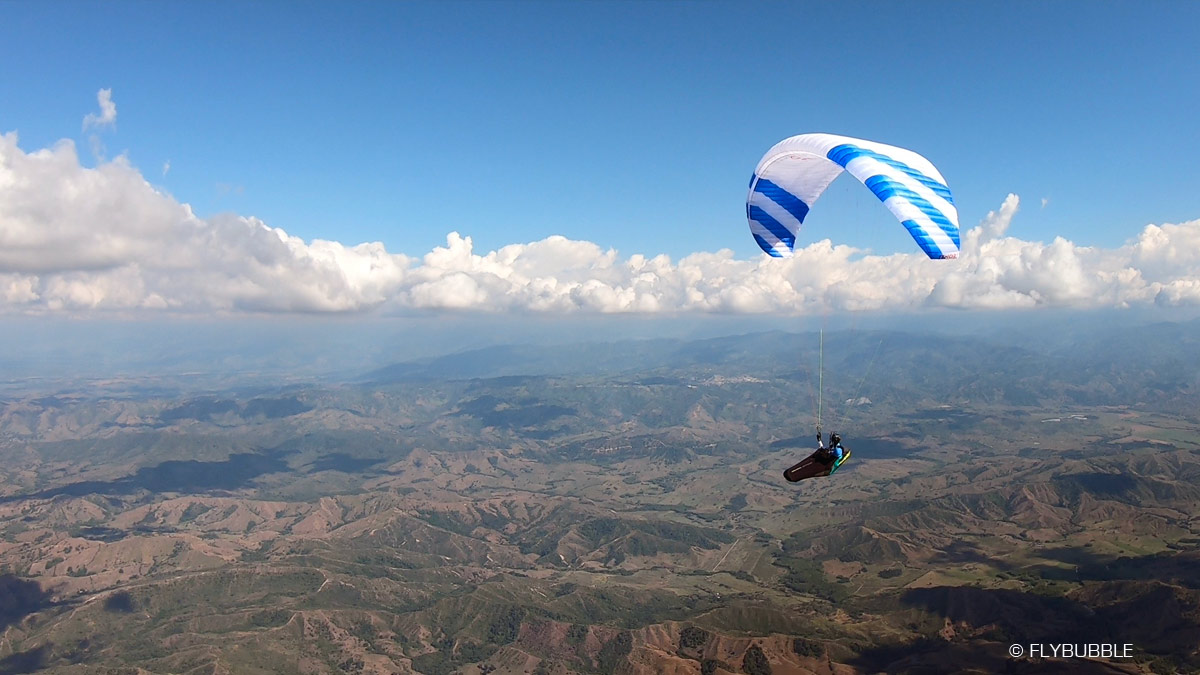
I was excited when PHI released a lightweight version of the TENOR. The original wing (also a low B) has impressive performance, nippy handling and great passive safety. How does the new TENOR light compare to the full fat version? I flew it in the UK winter and then for 30 hours in Colombia in a wide spectrum of flying conditions whilst leading a cross country paragliding tour, which gave me a great opportunity to test the responses and compare it with other current wings. Is it any good? Let’s find out.
The TENOR light has a similar ‘nice’ level of feedback to the TENOR—a bit more direct, with a bit less inertia—and an all-round sporty, fun yet very comfortable feeling even in active air. It had no problem at all keeping up with current high B wings. The low weight and small pack size of the TENOR light make it easy to pack and nice to carry.
Phi TENOR light: Construction
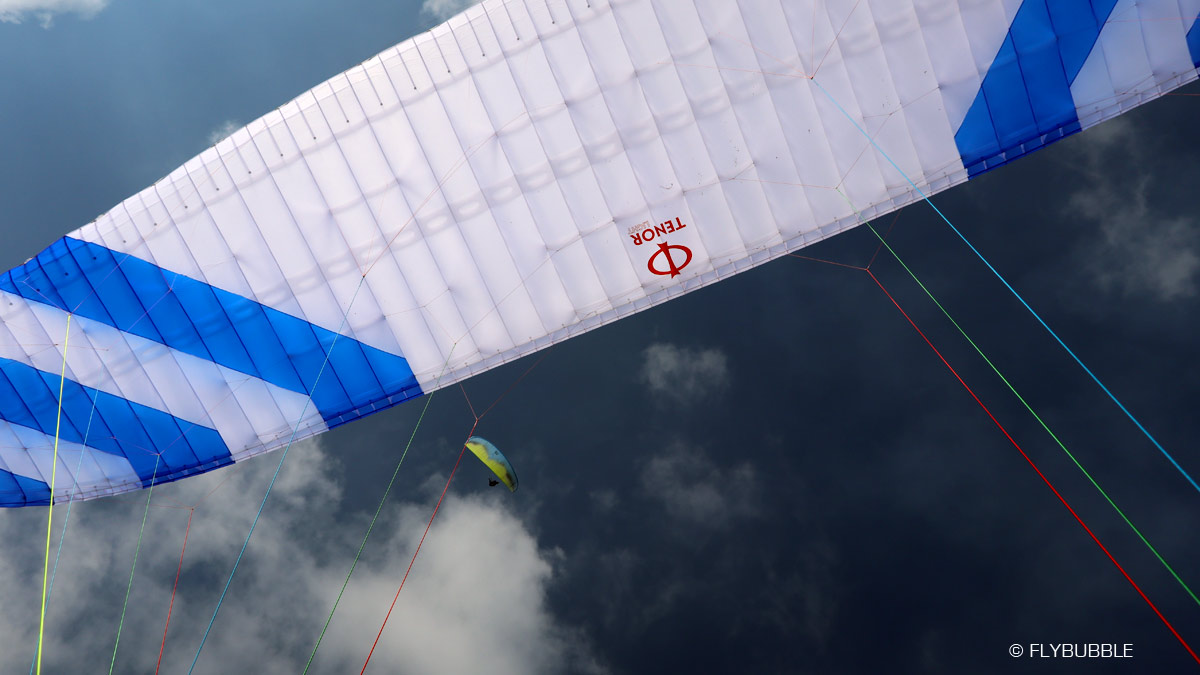
Excellent build quality all-round. The chosen materials, standard of design, components, construction, details and level of craftsmanship are all excellent. It seems to me that Hannes’ experience of designing and producing paragliders shows itself in the choices he makes for every detail of his wings. I expect that PHI wings are going to stand up well to the test of time.
The riser options for the TENOR light are the same as for the VIOLA: choose either "Semilight RZ4" risers with maillons, split As, standard brake handles with magnetic attachments, approx. 290g the pair, or "Superlight RZ3" with softlinks, no split As, light brake handles with hook & loop attachments, approx. 145g the pair.
The Superlight risers I tested were of a very high quality, and I found them to be pleasant and easy to handle. They have little plastic balls to attach the speed system to (rather than Brummel hooks). I like the PHI softlink solution offered on their lightweight wings. The neat material covering the softlinks sometimes slips down, but it’s very easy to fix with a quick flick of the wrist.
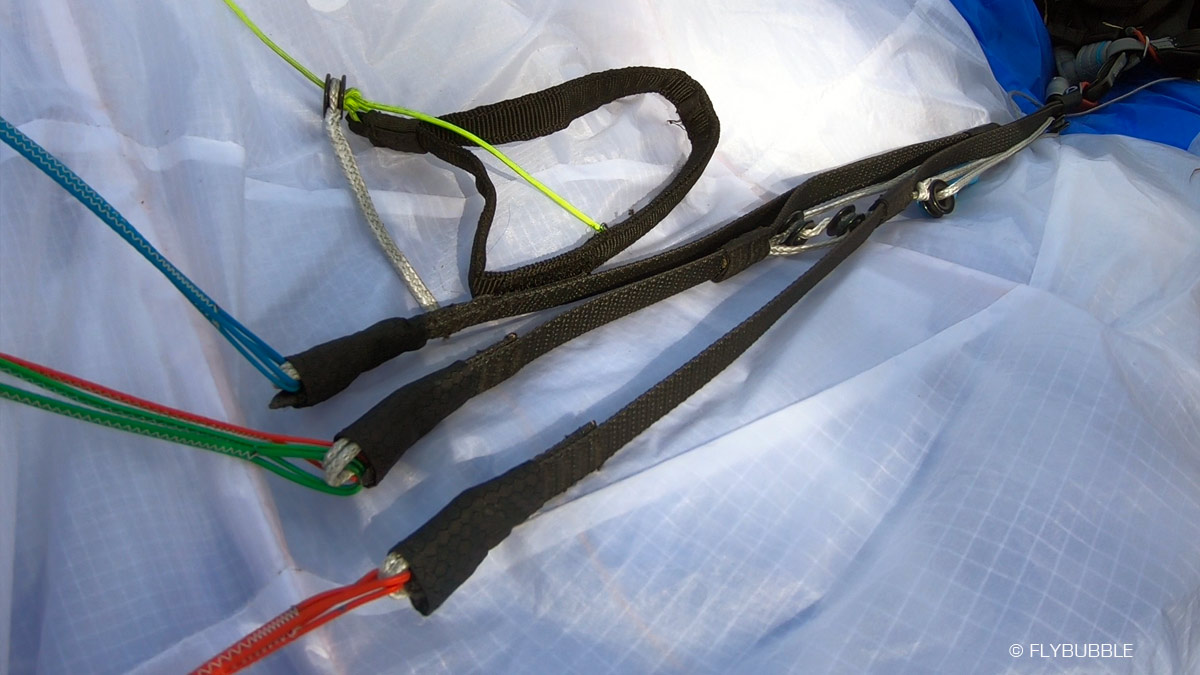
However, the Superlight risers do not offer split As. For launching this is not an issue as the wing tends to inflate from the centre anyway. It is less convenient for inducing big ears because the TENOR light risers are relatively long and the wing has relatively high pressure, making the ears harder to pull. I usually prefer maillons, to avoid trim issues, friction and to improve convenience.
The hook-and-loop fastener brake attachments on the Superlight risers are easily dislodged. My preferred style of brake attachments are ones with high quality magnets, seen on the Semilight risers. So all things considered, we advise most pilots to choose the Semilight RZ4 risers which are only approx. 145g extra weight.
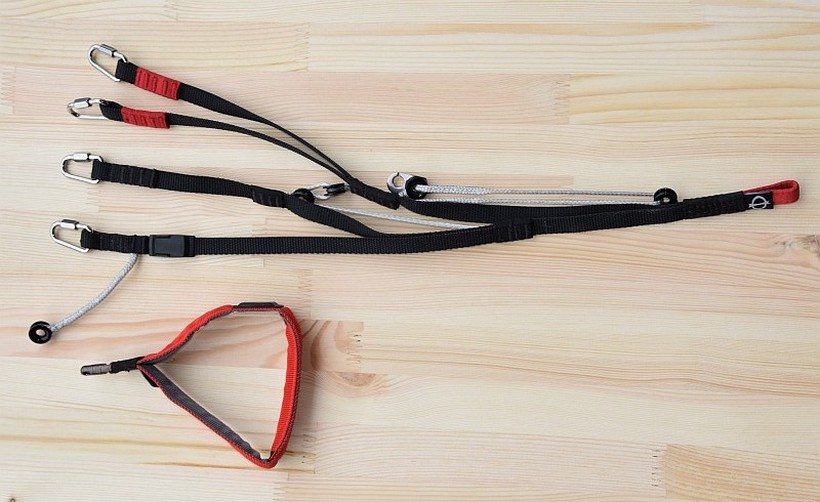
The TENOR light colour scheme is pleasing. Like other Phi wings, it really does stand out from the crowd! Finnish photographer Harri Eskelinen loves the look of the wing (below) paired with the Woody Valley GTO light harness and our new Flybubble speed arms. Hannes: “In Austria and Switzerland we like the red and white MAESTRO.”
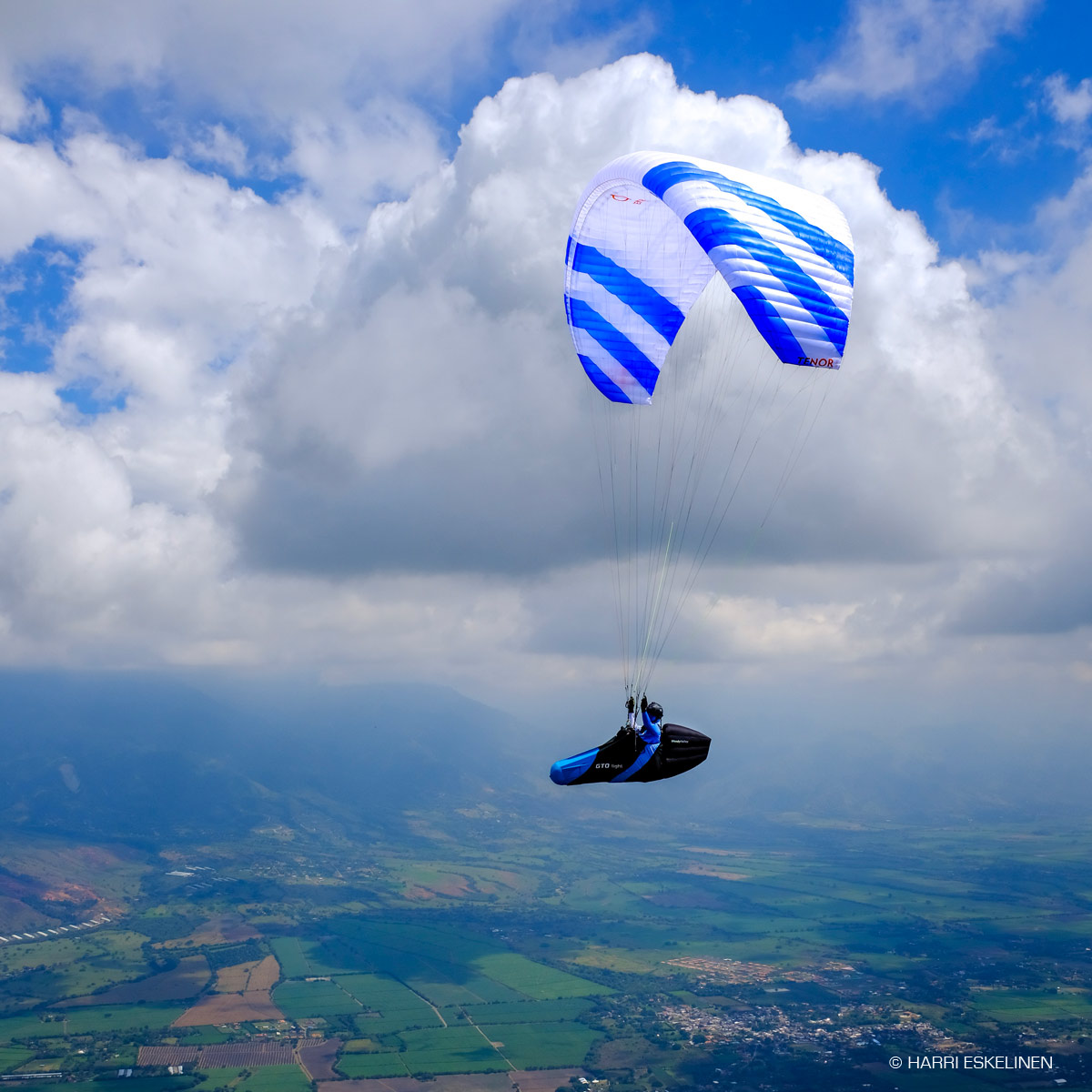
The low weight and small pack size of the TENOR light make it easy to pack and nice to carry.
The standard PHI rucksack that is delivered with PHI wings is very light and compact and surprisingly comfortable considering how basic it is—just two shoulder straps, very little padding and almost no stiffening. It could really do with a waist strap to take the load off your shoulders. There are better rucksacks around, but there are worse too!
Phi TENOR light: Launch

Straightforward! The TENOR light is even easier to launch than the standard TENOR, which is already pretty easy, especially in light and variable thermic conditions. The exception is in stronger winds where the light fabric gets lifted up more easily by the breeze and so requires more careful management to keep it all under control. This is common with all lightweight wings and there are a few easy techniques to manage this.
Like the TENOR, the wing tends to inflate from the middle first, with the tips a little slower to fill with air, which I think is a good thing. What you don’t want is a wing that tends to inflate from the tips first, giving a tendency to either clap hands or inflate asymmetrically and so veer off to one side. Also like the TENOR, the TENOR light needs a little pitch control to stop it overflying. It’s not a pitch-dampened beginner wing; it wants to fly. Just a small amount of brake is required for this.
Since the TENOR light is around 25% lighter than the standard TENOR (which is by no means heavy in its class) it has slightly less inertia and builds up less energy, so requires a little less input to control and responds faster to pilot inputs. This is true both on the ground and in the air.
Phi TENOR light: In the air
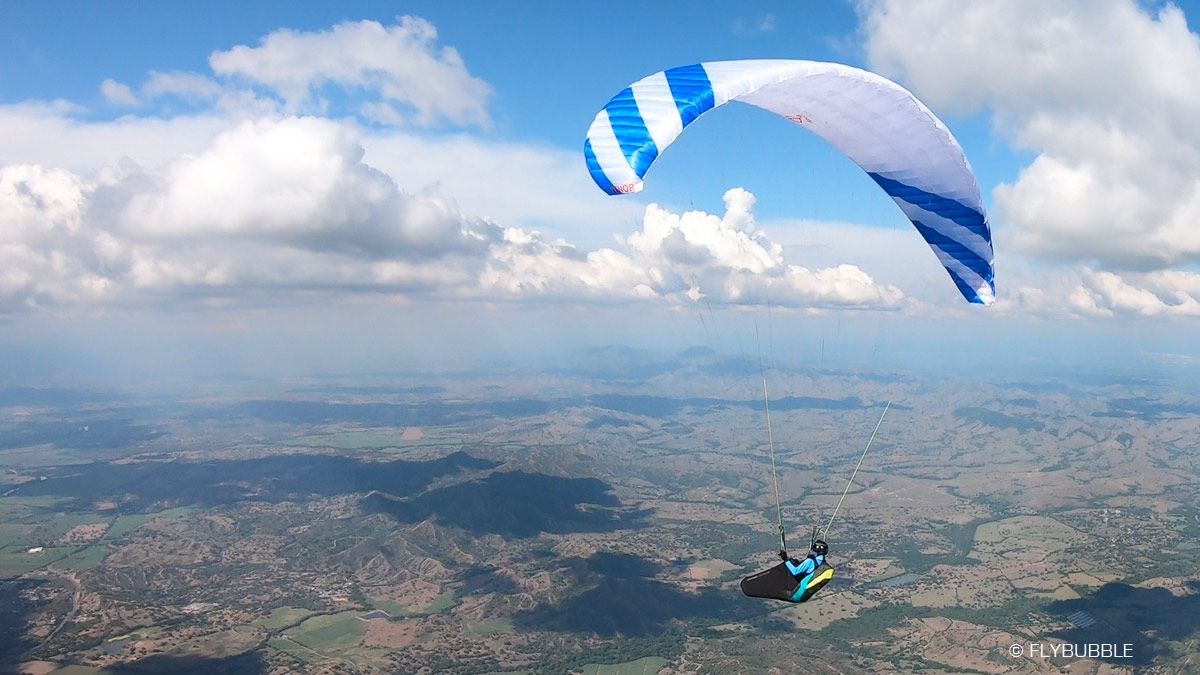
Flying the TENOR light is even easier than the TENOR, with similar fun and responsive handling and at least as good performance—maybe even better! It has light brakes, even lighter than the TENOR. Flying for hours proved less tiring than most other wings I’ve ever flown, of all levels, despite the often boisterous Colombian air.
The TENOR light has more movement, feedback and energy than some low B wings (e.g. Nova ION 5, Skywalk TEQUILA5, Gin Atlas 2). Some pilots moving up from a dampened classic A or low B wing might take a bit of time to adjust to the TENOR light’s extra movement and feedback, but once they settle in and realise that they have a wing that is telling them more about what the air is doing, and responding more directly to their inputs, I am sure that almost everyone will be hugely happy with the upgrade.
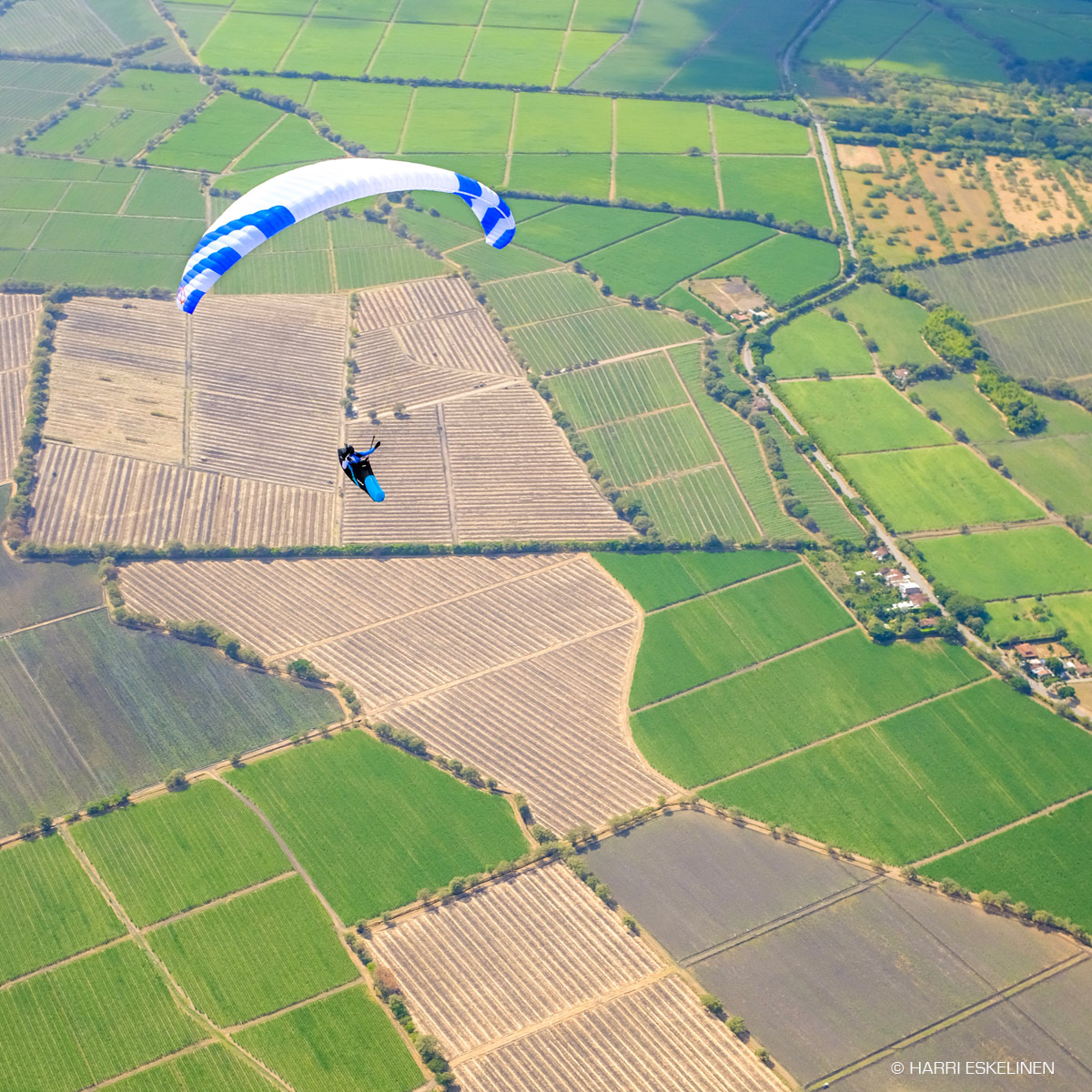
However, if you prefer a wing that dampens out the bumps, sits steadily above your head even in moderate turbulence, and is very forgiving to heavy handed inputs then perhaps you will be better off staying on a more dampened classic A or low B wing, or perhaps take a look at the Phi SYMPHONIA.
The TENOR light has a similar ‘nice’ level of feedback to the TENOR—a bit more direct, with a bit less inertia—and an all-round sporty, fun yet very comfortable feeling even in active air.
Phi TENOR light : Performance
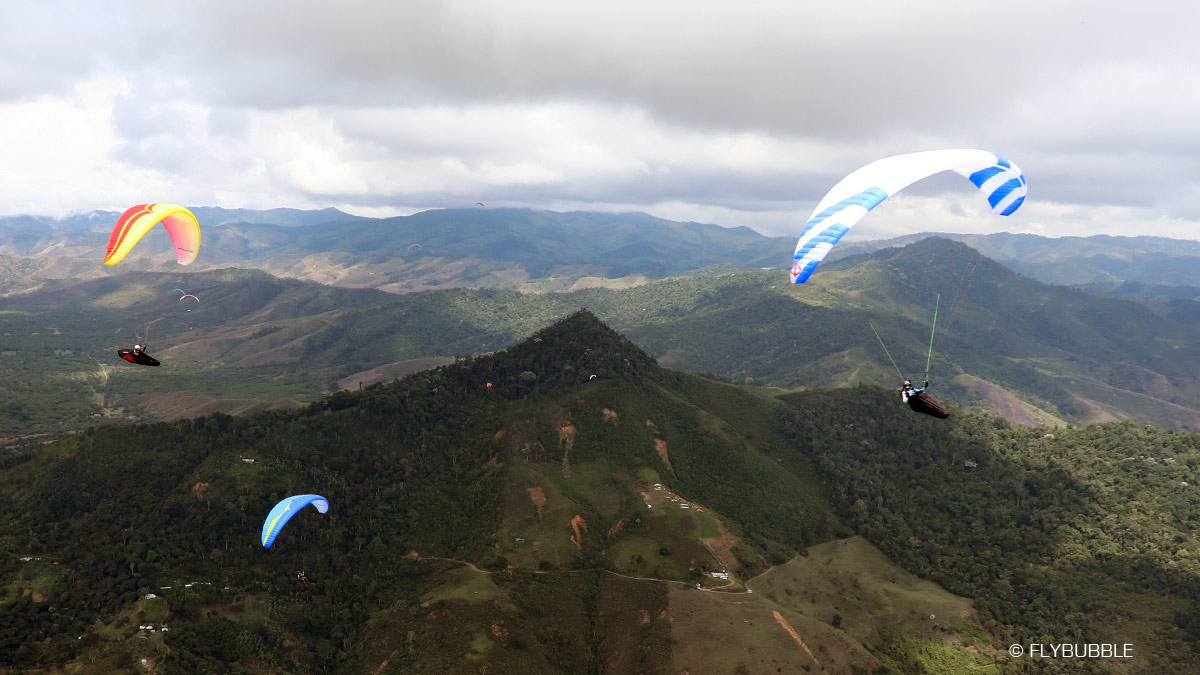
There were many pilots to compare with in Colombia and the TENOR light had no problem at all keeping up with current high B wings, previous generation C wings and even some current generation C wings like the Ozone Delta 3 (flown by other XC group leaders).
I've had many glides with the Gradient Nevada 2 (current high B), Niviuk Artik 4s (previous generation mid C) and Nova Phantoms (super-premium low-mid B) and our glides seemed very similar - but the TENOR light seemed a little bit faster, despite similar or heavier loading on the other wings! One Artik 4 pilot commented that he found it a little frustrating at times since he has a more demanding glider to fly but seemingly less real performance, especially in more active conditions, even into wind! When I mentioned this to Hannes Papesh from Phi he commented: “Yes, that is what we experienced as well. The TENOR has a very good speed in real conditions: hard for others to keep up.”
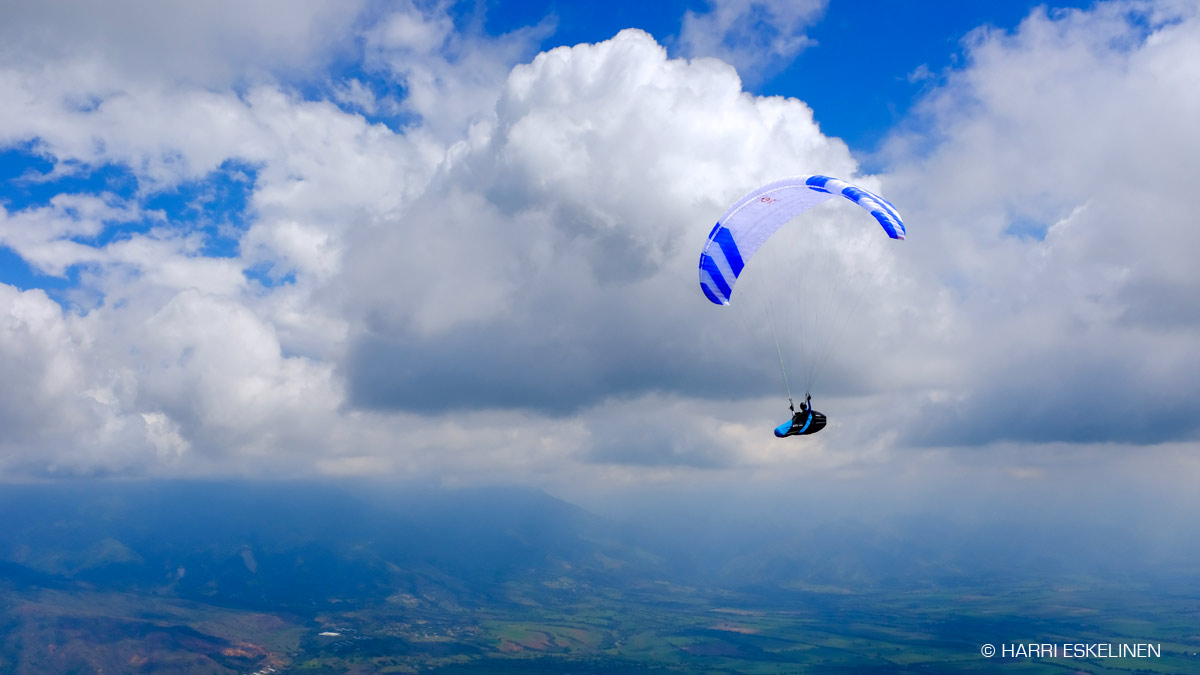
Although it’s always hard to tell for sure about paraglider performance in active air and impossible to give scientific conclusions, from the flying Nancy and I did in Colombia I am convinced that the TENOR and TENOR light perform significantly better than almost all current wings in this class (low to mid B, what we also call Progression paragliders).
On the TENOR light I feel like I'm flying a compact sports car with fun and sporty handling—it’s pleasantly responsive and you can turn it nice and tight when you want to. Several pilots I flew with were clearly surprised to find out that the TENOR light is ‘only’ a low B wing.
Phi TENOR light: Stability
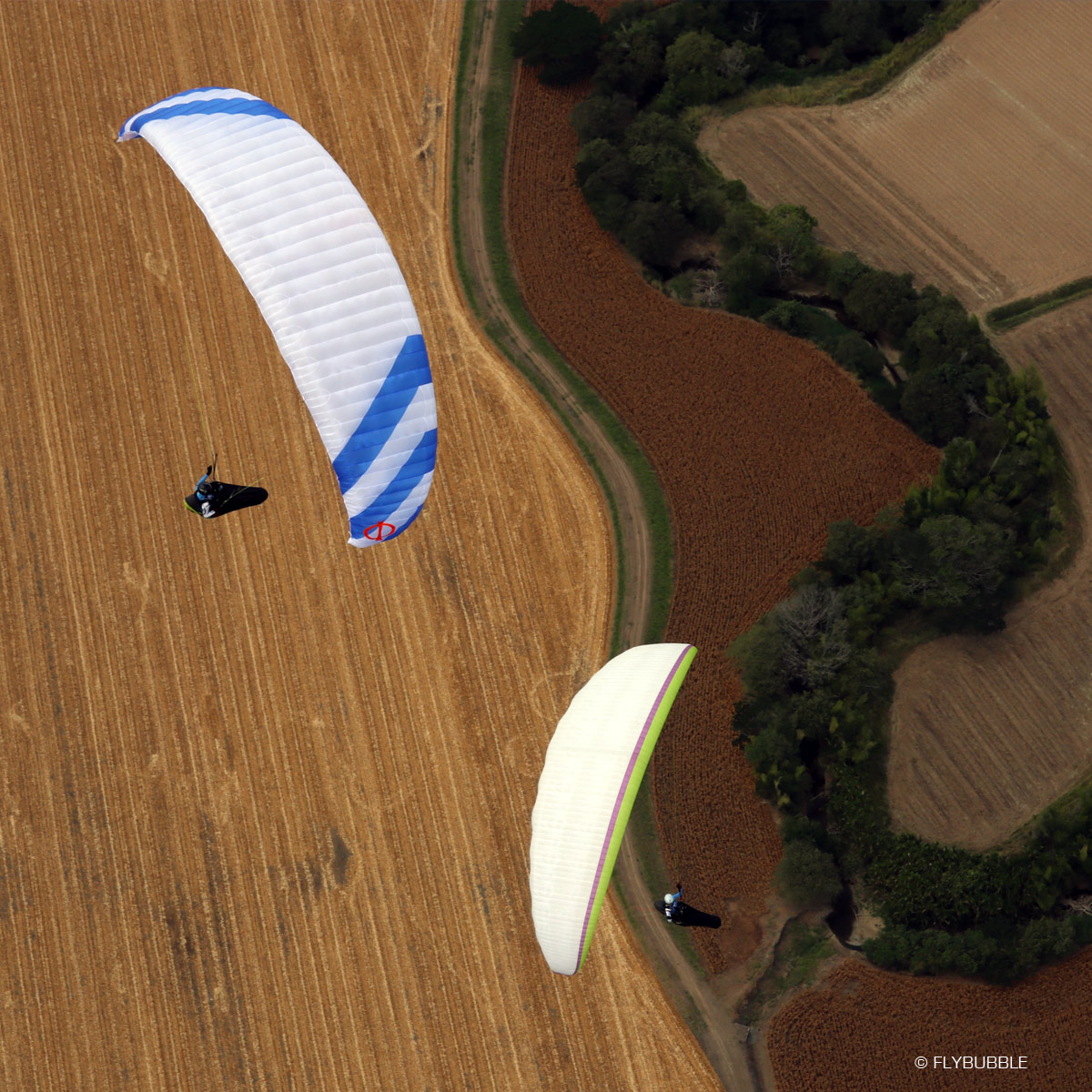
It might have been the flying conditions—it was quite sporty at times in Colombia, with many wings getting sizeable collapses nearby—but it seems the TENOR light wingtips are a little softer and a little more prone to tucks than the standard weight TENOR. It's still very well behaved and collapse-resistant but I felt there might be a difference. Hannes told me: “The line trim of TENOR and TENOR light are the same. There are minor effects, having split A (standard on TENOR) or not (Superlight riser option on TENOR light). Aerodynamically the single A riser is marginally better. By moving the A2 main line hang point to the outside the split A configuration has slightly more drag from the risers and more AOA in the wingtips (more stability, less turnability). This might make the single A riser configuration a little more sporty (slightly better turning and performance, but slightly less stable in the wingtips). Acceleration is the same.”
Phi TENOR light: Who is it for?
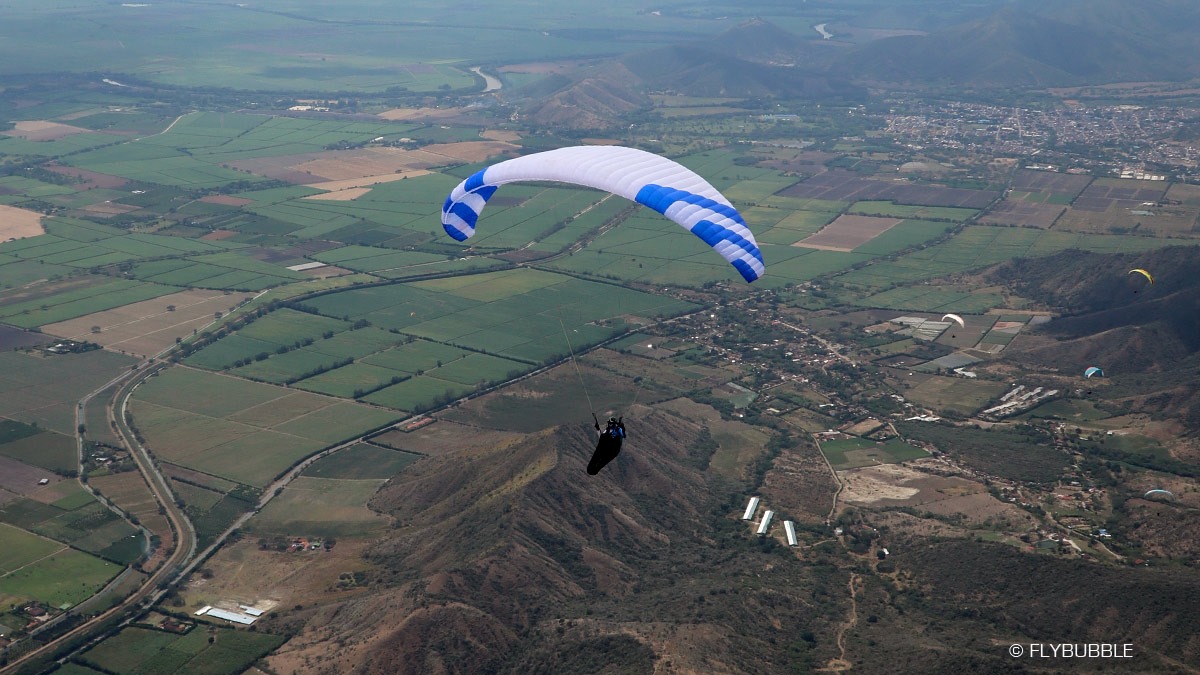
From all the testing I have done on the TENOR and TENOR light I am convinced that they have exceptional performance in the low B class, and an outstanding ratio of stability to performance. Reading the feedback from pilots who have flown the TENOR and TENOR light it’s clear that many others have come to the same conclusions. It pulls away from everything in the low B class, keeps up with many of the current wings in the high B class, and even gives the very best of the current high B class—for example, Advance IOTA 2 and Supair STEP—a very hard time!
It offers low pilot demands (as you’d expect for a low B), forgiving launch and landing characteristics, light brakes, responsive sporty handling, good level of feedback without being too chatty, light weight, compact packing size, simplicity of the lines and risers, easy preparation, with exceptional—and very usable—performance.
Huge cross country flights are most certainly possible with this wing. Pilots with less experience—and perhaps lower ambitions—will love it just for fun recreational flying and smaller adventures, knowing that they have that ‘hidden power’ under the bonnet if they find themselves in the right place at the right time.
What a fantastic all-round cross country, lightweight hike and fly machine!
Find out more about the Phi TENOR light
Phi TENOR light: review video
Carlo gets excited when performance is combined with safety, so the joys of long glides and fast climbs are made accessible to more pilots.
Phi TENOR light: Review notes
I first ground handled and flew the TENOR light size M 21 in the UK on a few days in light to moderately breezy conditions with little to no thermic activity, scratching and soaring close to many other wings. This is actually a pretty good test for how the wing performs in comparison to other wings since the air tends to be quite laminar, as opposed to trying to do meaningful performance comparisons in active thermic air which, from my experience, can be very misleading, even with repeated testing. Still, you get some idea and can draw some rough conclusions. Of course how a wing performs in smooth laminar air can be quite different to how it performs in active air, so it’s ideal to test as much as possible in a variety of conditions!
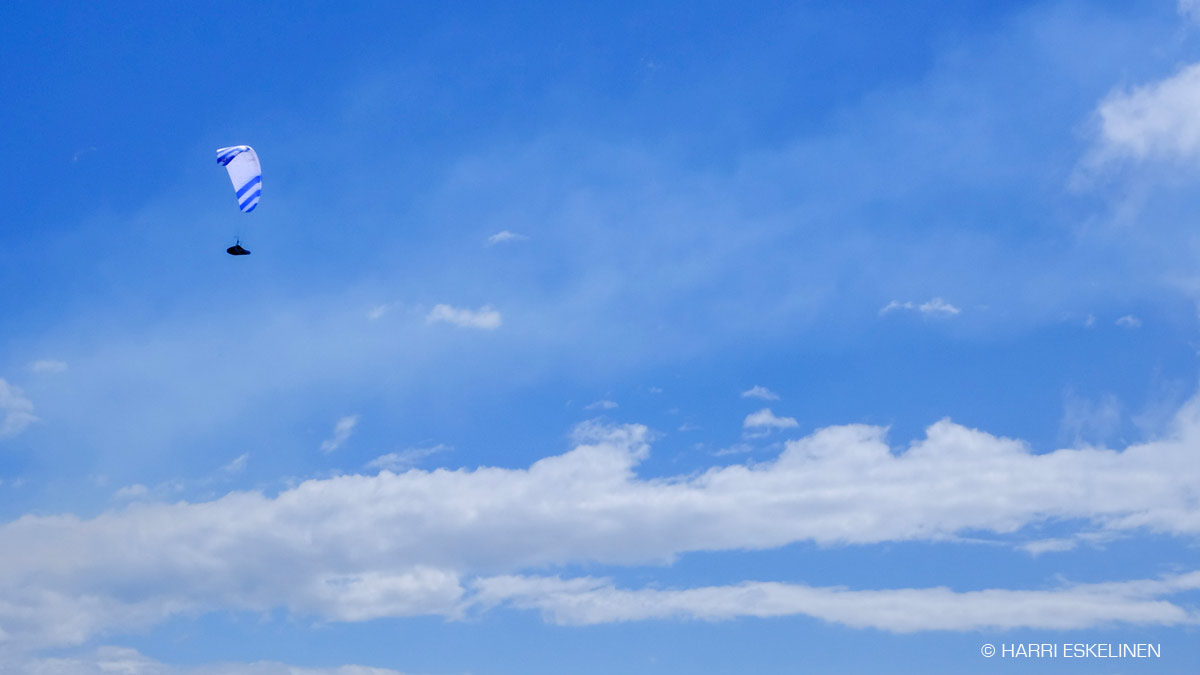
I also flew the flew the TENOR light size M 21 on 10 days in Colombia, around 2-5 hours flying per day, total around 30-40 hours. The flying conditions in Colombia were highly varied. Wind strengths were everything from nil (“light and vegetable”) to strong enough to be going backwards in ‘El Pacifico’ (the ‘Pacific wind’, a strong Colombian sea breeze effect) which resulted on one occasion in an ‘interesting’ reverse landing in small hills. Fortunately, the TENOR light behaved impeccably (and the pilot did his bit).
I flew the TENOR light with three different lightweight pod harnesses–the Advance LIGHTNESS 3, the Supair Delight 3 and the Woody Valley GTO light–for 3-4 days each. I did this both to get to know these three harnesses even better (I’ve already flown them all quite a bit) and to see how different the TENOR light felt with each one, and them with it!
Each size of the TENOR light has a standard weight range and an extended weight range. For example the size M 21 has a standard weight range of 75-95 kg, an extended weight range of 95-105 kg (the full certified weight range is 75-105 kg).
So we had something to benchmark the TENOR light against in Colombia, Nancy flew the Supair STEP (high end B) which we are very impressed with here at Flybubble—see our Supair STEP review. Towards the end of the trip we swapped, to help allow for the different piloting, and exchange feedback. Overall we felt that STEP had a slight edge in terms of sink / climb rate in weak conditions, but the TENOR light seemed to have no problems in keeping up in terms of speed and glide. In strong punchy cores and stronger turbulence the TENOR light’s lower aspect ratio, greater pitch stability and more forgiving stall point gave it a slight edge. Both great wings, but with very different characteristics, feeling and handling!
Q: what was your approx all-up weight?
Short answer: From 86-95 kg, mostly 90-92 kg.
Long answer: For more thorough testing--and so we can better advise our customers on which size of wing to go, for depending on various factors--I always try to fly wings at different points within their certified weight ranges, and with different harnesses, where practicably possible. With this in mind, I purposefully varied my all-up flying weight across the testing period in Colombia, min ~ 86 kg, max ~ 95 kg, mostly around 90-92 kg. Flying with three different pod harnesses, with weights varying from 3-3.7 kg, also naturally varied my all-up weight a bit.
(I also try to fly as many of the sizes of a model wing as I can, varying my all-up weight with different kit and ballast to suit. I had also previously tested the TENOR light in sizes M and S with a lightweight split-leg style 'mountain' sit-up style harness in the UK, the Advance Easiness 2, which gave me an all-up of around 83-84 kg.)
Q: What's the best place in the weight range?
For lighter/weaker conditions I'd recommend staying around the middle third of the "standard" weight range of the TENOR light (not right at the top of the the "standard" weight range, and not in the "extended" weight range, which is intended for flying in very strong conditions, hike and fly or just for those who want very dynamic handling). For the M 21 size TENOR light the "standard" weight range is 75-95 kg, so the 'middle third' is around 80-90 kg. From my experience I'd say anything up to around 92 kg is good for lighter/weaker conditions. You can always easily carry more water for stronger conditions, but it's not so easy to quickly lose weight in weaker conditions!
"The TENOR is already a fast wing. So not necessary to fly it on top of the main weight range. The extended weight range is for alpinists that love a very small, light and dynamic wing. Or for XC pilots on a very strong day with extra water ballast." Hannes Papesh
MORE ABOUT PHI

PHI is still a relatively new brand name on the paragliding scene however the people behind the name are some of the most experienced and talented designers and test pilots in the paragliding world, with a proven and impressive track record. Hannes Papesh designed wings for Nova for over 25 years, and also worked at Advance for 3 years. Mike Kung is one of the most experienced test pilots in the world and a pioneering acro pilot (see Acrobatics: The Definitive Guide to Paragliding Acro).
The Phi range begins with the SONATA (classic A), the SYMPHONIA (super high A), the VIOLA (ultralight A), CONCERTO (tandem EN A), the TENOR (low B) and TENOR LIGHT (low B), newly released is the MAESTRO (high B), currently under review by the Flybubble crew.
In development: FANTASIA (school wing) and an EN C (TBC).
Future: Anything is possible! Hannes’ designs for Nova used to dominate the competition scene, until Nova pulled out of the comp scene in favour of focusing their efforts on ‘real wings for real pilots’. Hannes continues to champion the cause of bringing high levels of performance into responsive wings with low pilot demands.
Brought to you by Flybubble
Like what we do? The best way to thank and support us is to buy gear from us and recommend us to others. Review our service on Trustpilot and our products on Flybubble Shop. You can also subscribe to Flybubble Patreon. Thank you!

